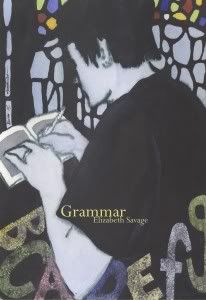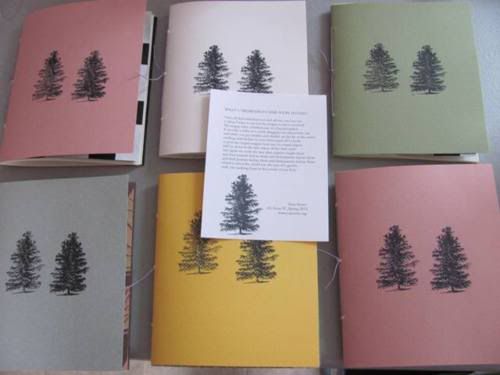In “First Tools | Fairgrounds,” the opening poem of the second section of All Steel (Flim Forum Press, 2012) by Lori Anderson Moseman, readers encounter two-column poems that begin:
axe—the first tool we're issued on site cane—the first tool we're issued at home
then, a rusty file to sharpen our blade the one granddaddy broke to poke his boar
steel on forged steel—skinned knee tap tap we girls with our champion gilts
we stroke unidirectional to the edge move them slow in front of the judge slap
drought hills our brittle California gold the jowls the front quarter bruising showing up we
whittle underbrush arbutus strung out on white pigs on a Hampshire's white stripe (41)
In many ways, this brief excerpt represents the collection as a whole: a formally inventive exploration of our engagement, as human beings, with the world via a poetry of hand tools. Whether whittling away at underbrush in California or poking a boar at a New Hampshire fair, these instruments both found, perpetuate, and alter our culture.
Of course, the manner in which individuals interact with the material world and use tools differs; Moseman's collection suggests that one of the determining factors is gender. Take, for instance, the first poem of All Steel, titled “Harrow | Melodrama”:
Nineteen and nearly blind, she runsacross fenceless acres to her husband.He and mule are at the plow. No.He's at the rake. No. Must be the harrow.She's just learning each season's blade.Unsure even now as she runs to him,dead baby in her arms—their first.When she reaches him, they becomeone-winged birds destined to flyas a pair—broken nest in their beak.The ground below always in needof breaking, of poking, pecking. (15)
The “husband” works the ground, which is “need / of breaking, of poking, pecking,” while his wife cares for their first child. But due to either the husband's inattention to his domestic responsibilities, or the wife's inability to recognize the proper tools with which to navigate the world, the child dies. Either way, the poem draws boundary lines: man loses himself in his tools at the expense of life, and woman is blind to the names and uses of those same tools that might be able to preserve life. The divide manifests itself, once more, in the poem “Crooked Knife | Reportage”:
Henri visits every canoe he's made and sold. I'd rathervisit each slaughtered birch, tar them, wrap them, healeach toothed leaf free so green unfolds into fall yellow (18-19)
The Henri character “visits every canoe he's made and sold,” demonstrating an awareness, passion, and concern for the objects he's both created and inserted into a market economy; the speaker of the poem, on the other hand, expresses her concern for and desire to heal the birch trees that Henri chopped away and cut from in order to build his canoes.
Yet, as the narrative of All Steel progresses, rigid binaries dissolve and gender relations associated with tools and nature become more complex and permeable. In “Self-Employed | Main Street,” readers find the following passage:
She enters a beauty pageantfor trees. She abandons her hobnaillogging boots, practices in heelsHer talent? All she has is an ancientstory: man makes object from woodmanufactures replica with manmadegoods. Woman watches or laborsor documents. All long to stand stillto trade contest for a cathedral—the last grove of the tallest oldest living trees. (48)
A superficial reading of the above excerpt might lead one to believe that the poem reinforces the previous binary relationship in that “man makes object from wood” and the female character “enters a beauty pageant / for trees.” A closer reading, though, reveals a more nuanced state of affairs. To begin with, the unnamed “She abandons her hobnail / logging boots” before practicing for the “beauty pageant,” meaning that she has worked in the logging industry (and by extension, used tools such as saws, etc.). Likewise, although she “watches” and “documents” logging activities, she also “labors” and, thus, is implicated in deforestation. Later, in the “improv overlay” section of the poem “Cyber Fools | Bandstand,” the speaker reveals that she is “content with tools / stopping short of instrument / I veil mastery in yet another male / enclave” (43), and thus has evolved from the collection's first poem wherein she was blind to the differences and names of various tools; she now, in fact, holds a “mastery” over them, albeit “veiled” from the
“male / enclave” (i.e. male ego?).
The binary, though, doesn't alter in only one direction; in the poem “May | Procession,” which opens the concluding section of All Steel, Moseman writes: “The youngest son of the oldest man leafs out: green / face, green hands, foliage from his mouth” (65). The male progeny of the “oldest man” develops such a close kinship with his woody counterparts that he, literally, becomes a tree. Thus, at least one member of the male community succeeds in identifying with vegetative life forms.
When all is said and done, then, one could argue that All Steel does not advocate for the abandonment of tools and our manipulation of the natural world; instead, the book promotes a composite approach to our relationship with our surroundings that champions innovative construction imbued with empathy for the natural world in which we attain our resources. Yes, we should build; but we should also “stop arguing near plants” (54) and let the “trees that turn [our] head[s]” (47) in admiration of their beauty, not the constructs of our more often-than-not destructive labor.
When all is said and done, then, one could argue that All Steel does not advocate for the abandonment of tools and our manipulation of the natural world; instead, the book promotes a composite approach to our relationship with our surroundings that champions innovative construction imbued with empathy for the natural world in which we attain our resources. Yes, we should build; but we should also “stop arguing near plants” (54) and let the “trees that turn [our] head[s]” (47) in admiration of their beauty, not the constructs of our more often-than-not destructive labor.
Yet, even with the fluctuating boundaries that constitute our engagement with the natural world and the corresponding promise that such mutability could result in a more productive relationship for both humans and the earth, could positive change be too late? If the poem “Rescue Crews | World Trade Center” is any indication, we might just be doomed:
Ladder to nowhere. Our favorite toolthere at ground zero. Simple ladder in the aftermath:2005the extent of our ascension.2005The wooden ladder workmen built to help “rescue efforts” at Ground Zero remains an active tool. (61)
Man used tools to create skyscrapers and airplanes, then man used those skyscrapers to house institutions of economic and financial domination and other men used those airplanes as instruments of death. In an effort to save those in danger, men employed their “favorite tool,” but that tool led “nowhere.” Yes, the “extent of our ascension” and the efficacy of our tools is frighteningly limited in the face of man's ruthlessness. Regardless of culpability, no one is spared: even “The artist injured her hand again: / blade to bone” (85).






